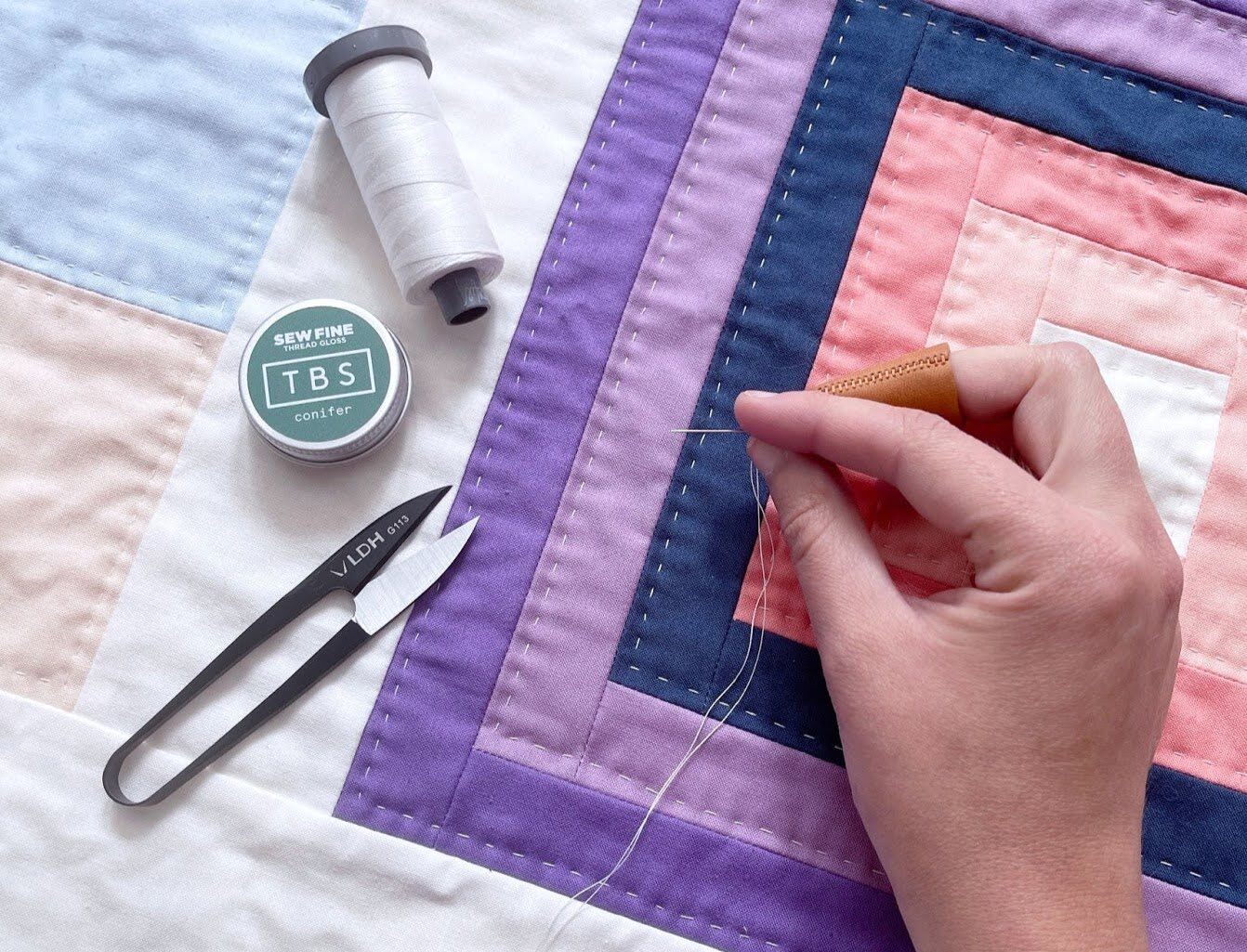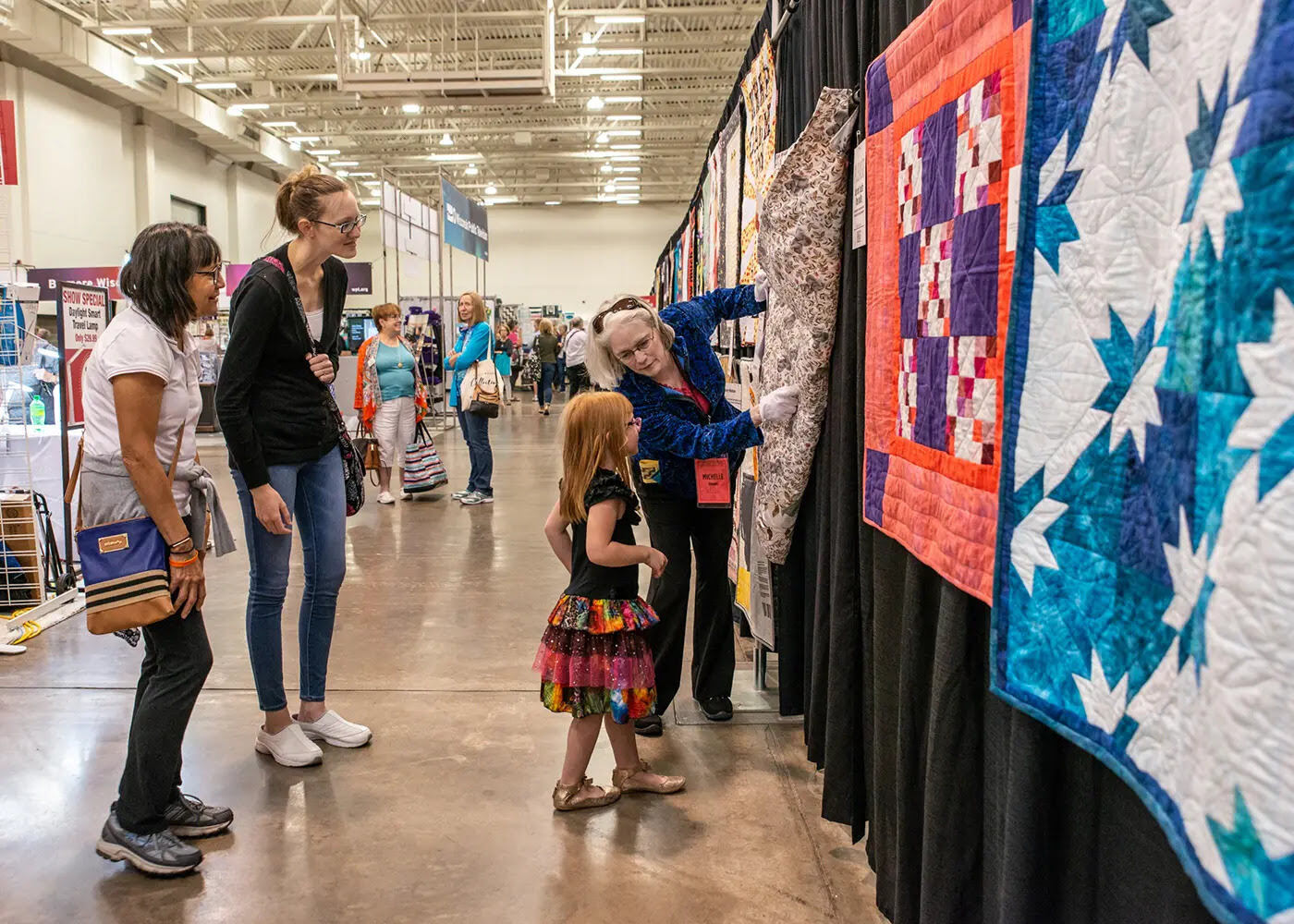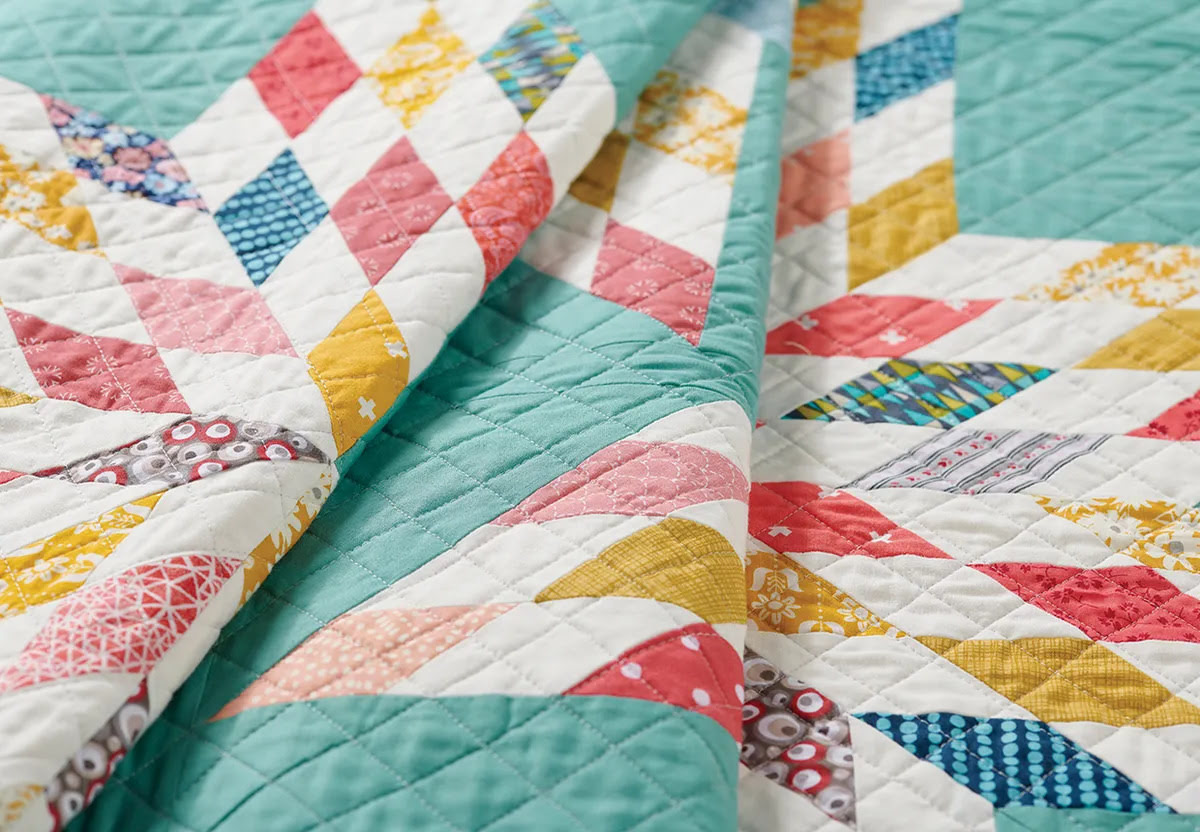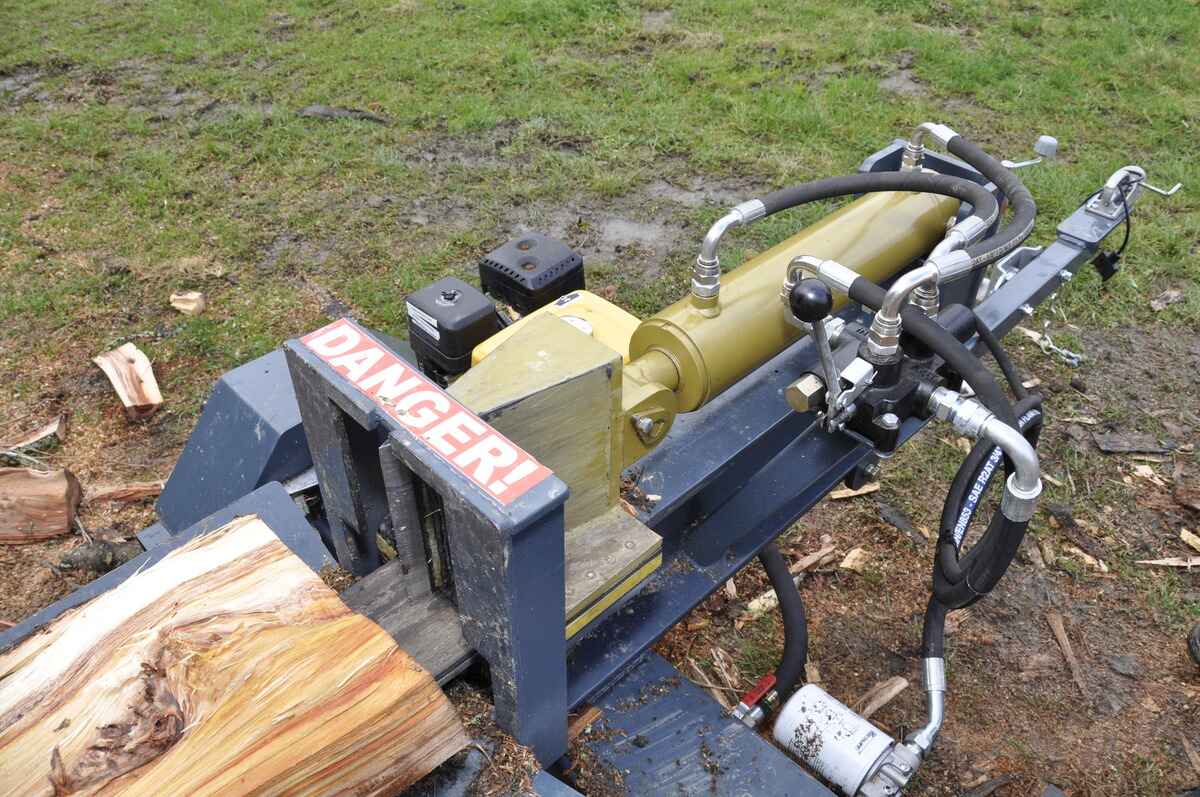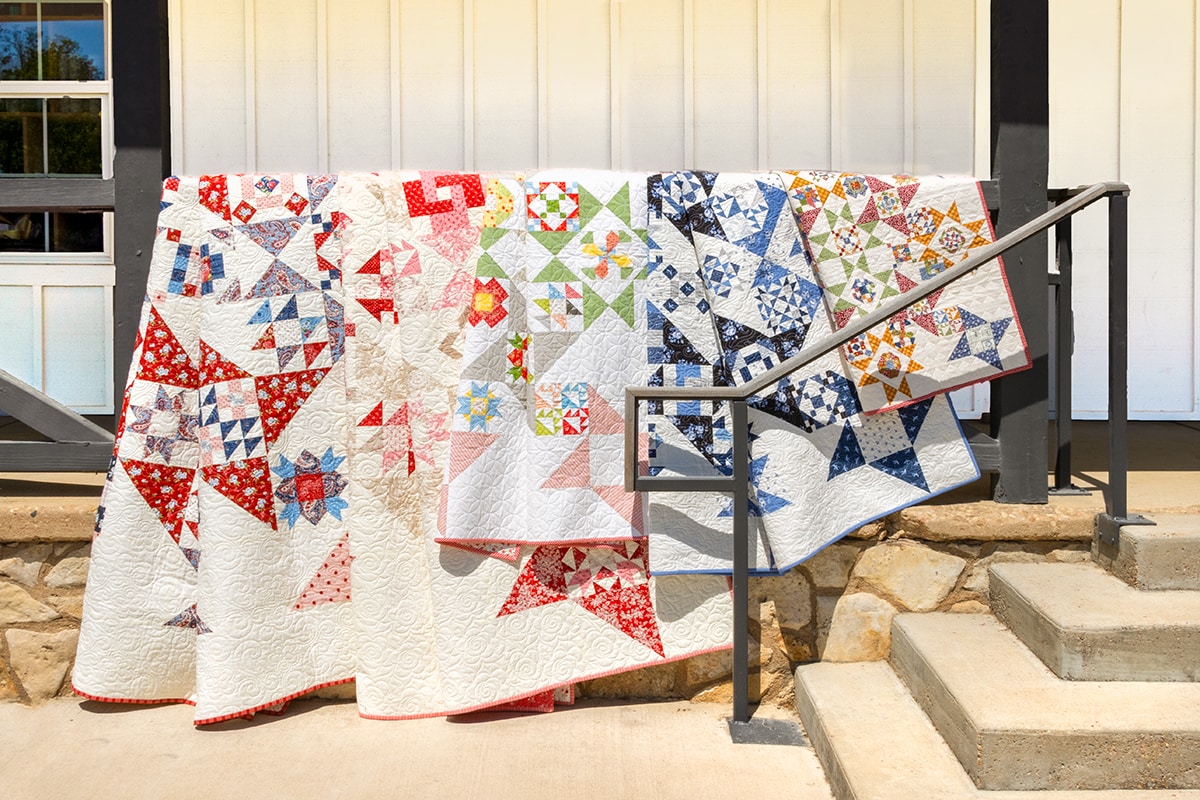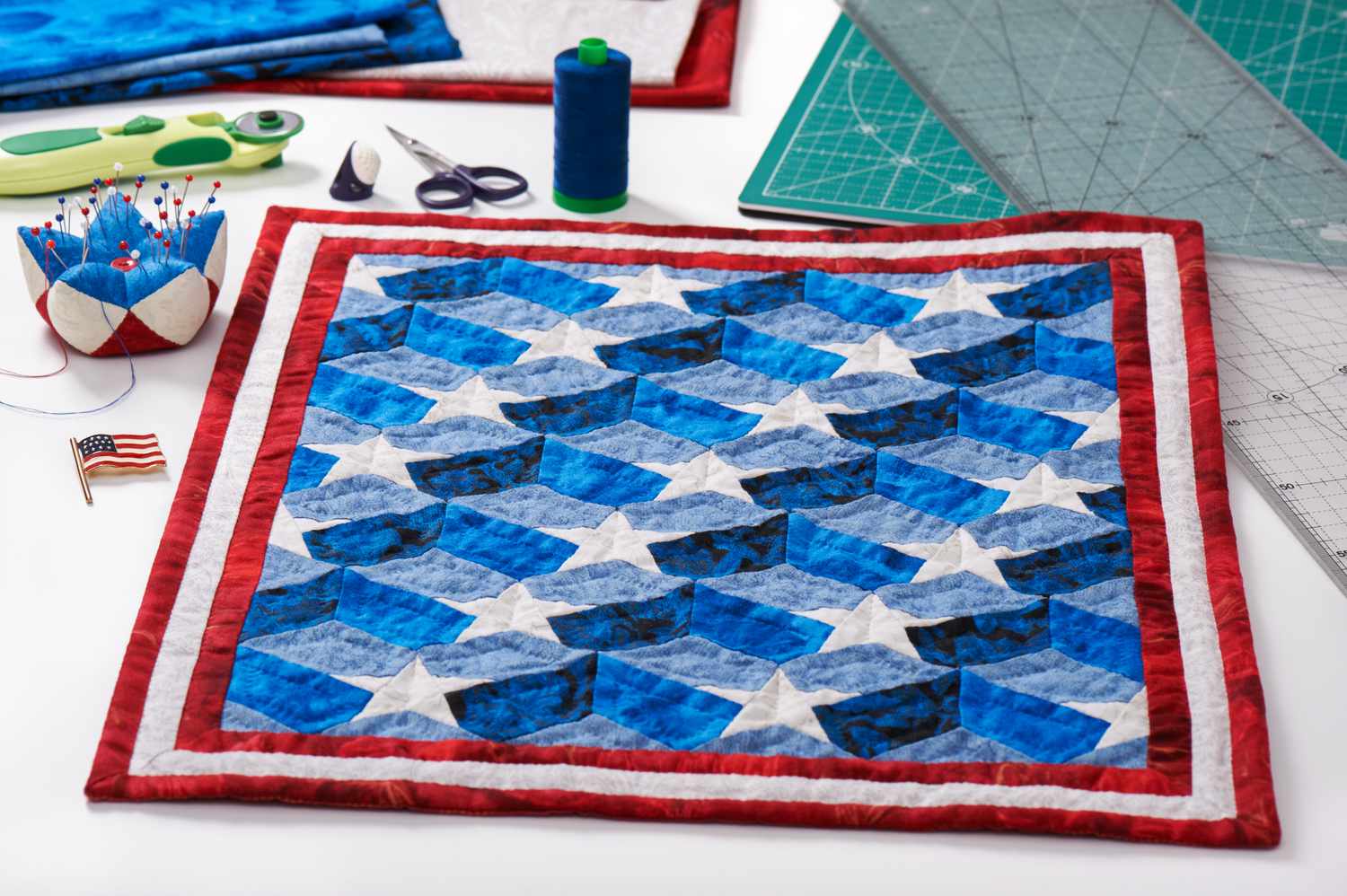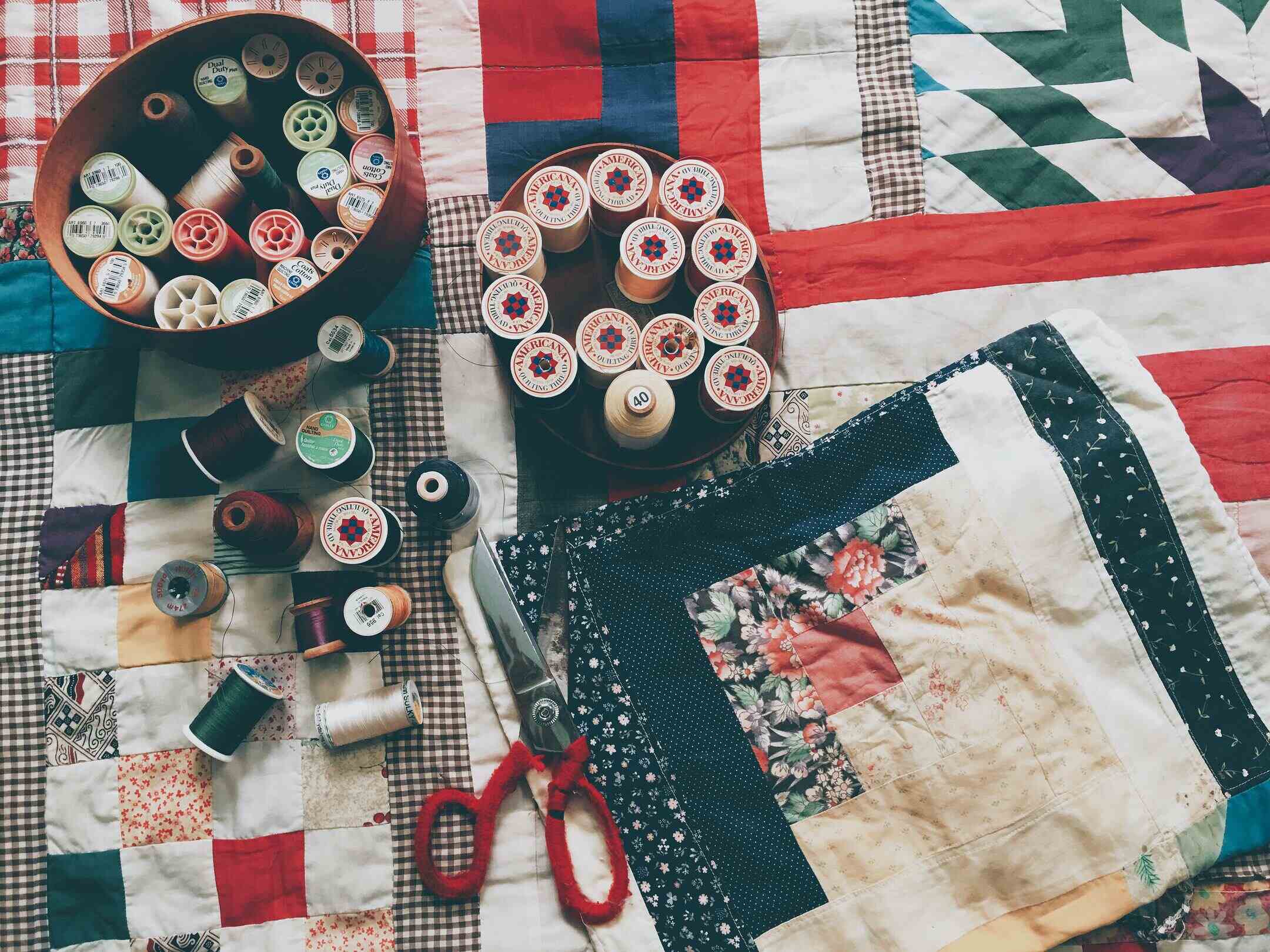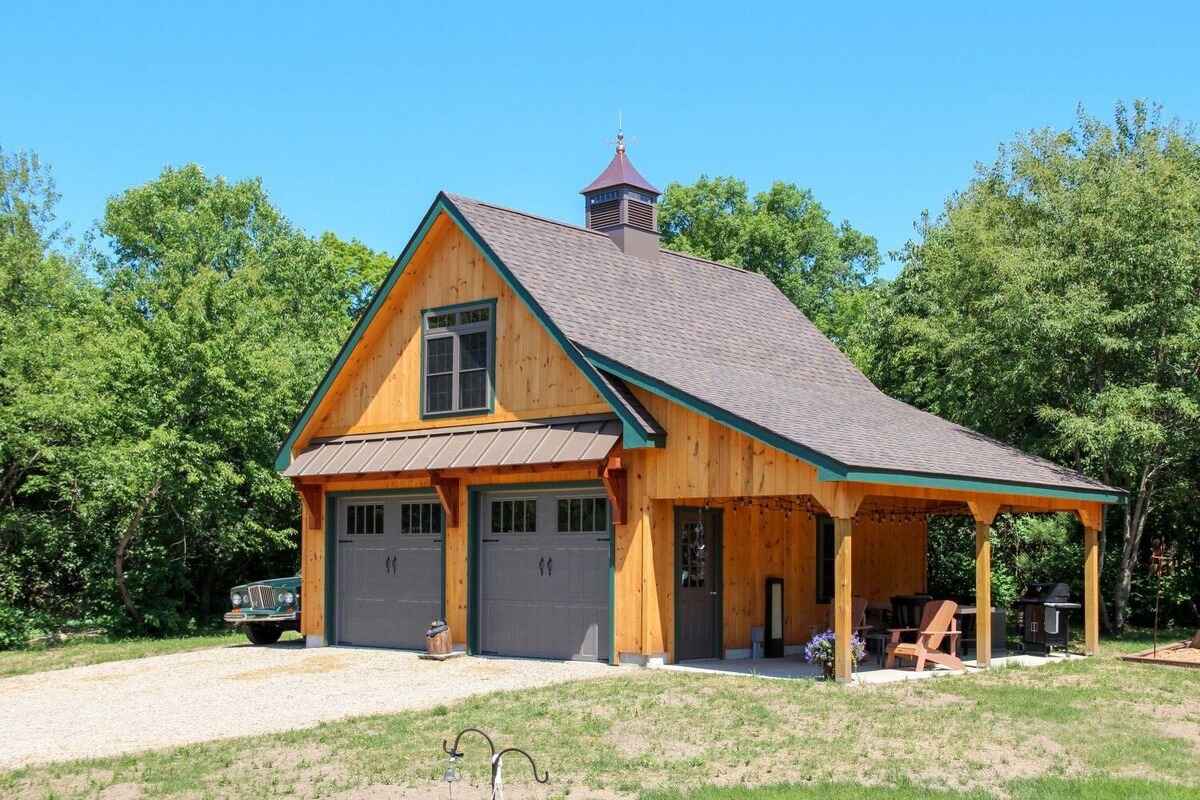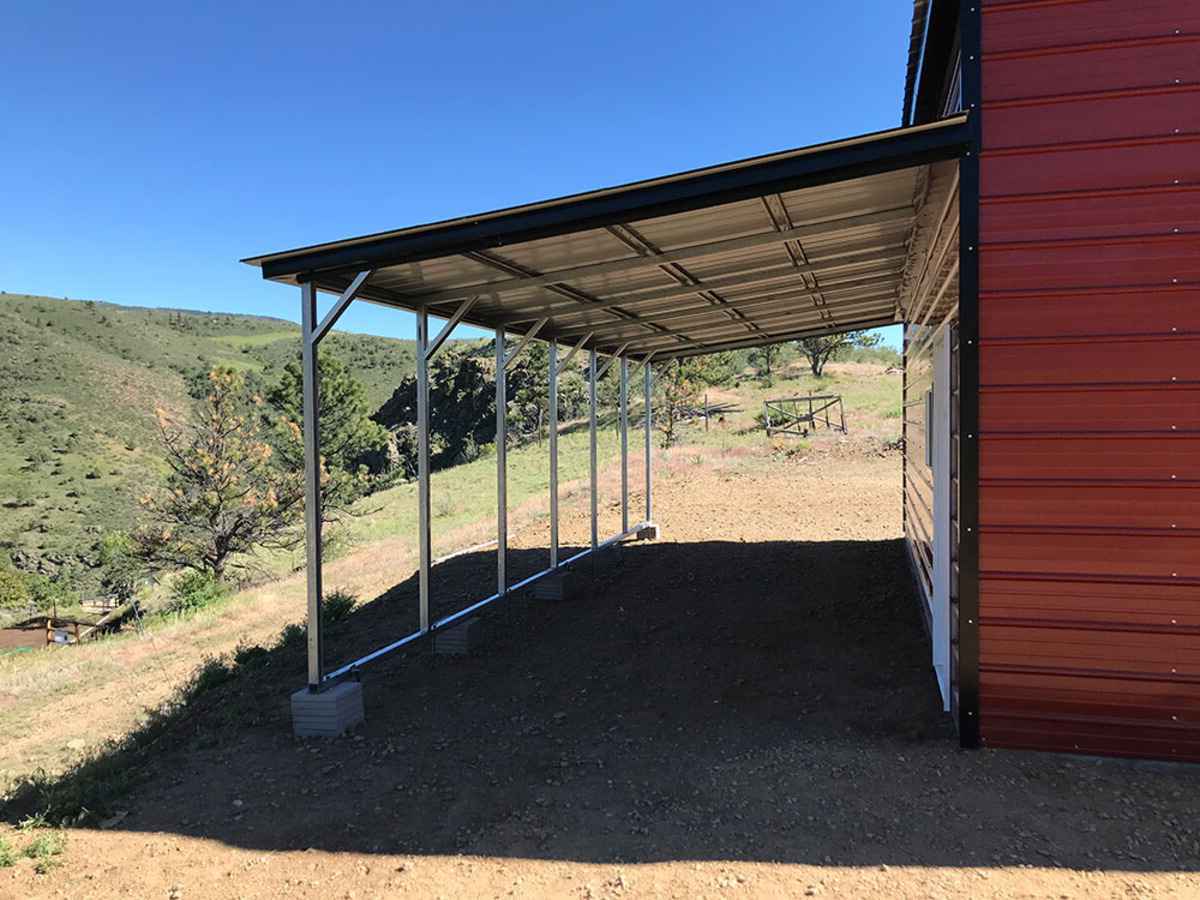Home>Create & Decorate>DIY & Crafts>Considering A Long Arm Quilting Machine? What You Need To Know
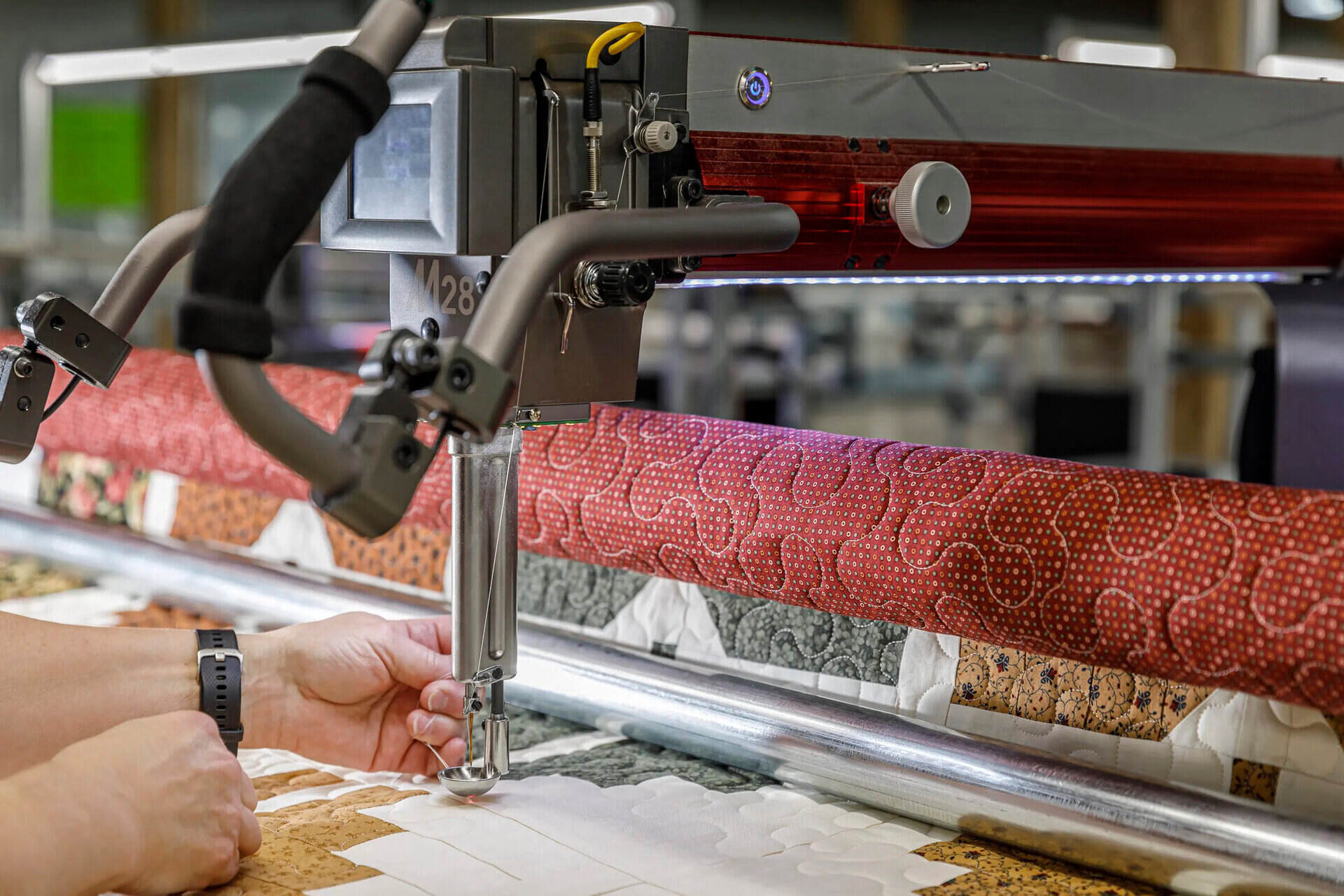

DIY & Crafts
Considering A Long Arm Quilting Machine? What You Need To Know
Published: February 15, 2024

Senior Editor in Create & Decorate, Kathryn combines traditional craftsmanship with contemporary trends. Her background in textile design and commitment to sustainable crafts inspire both content and community.
Looking to invest in a long arm quilting machine for your DIY & Crafts projects? Discover everything you need to know before making a decision.
(Many of the links in this article redirect to a specific reviewed product. Your purchase of these products through affiliate links helps to generate commission for Twigandthistle.com, at no extra cost. Learn more)
Introduction
Are you an avid quilter looking to take your craft to the next level? Or perhaps you're a seasoned professional seeking to streamline your quilting process? If so, then considering a long arm quilting machine might be the next logical step in your quilting journey.
Long arm quilting machines are a game-changer in the world of quilting, offering a wide range of benefits that can significantly enhance your quilting experience. Whether you're a hobbyist or a professional quilter, understanding the ins and outs of long arm quilting machines is crucial before making a purchase decision.
In this comprehensive guide, we'll delve into the intricacies of long arm quilting machines, exploring the factors to consider before investing in one, the benefits they offer, as well as the potential drawbacks. Additionally, we'll touch on the essential aspects of maintenance and upkeep to ensure that your long arm quilting machine remains in optimal working condition.
By the end of this guide, you'll have a solid understanding of what long arm quilting machines entail, empowering you to make an informed decision that aligns with your quilting aspirations. So, let's embark on this insightful journey into the world of long arm quilting machines and unravel the key considerations that can shape your quilting endeavors.
Understanding Long Arm Quilting Machines
Long arm quilting machines are a specialized type of equipment designed to simplify and expedite the quilting process. Unlike traditional sewing machines, long arm quilting machines feature an extended throat space, typically ranging from 18 to 30 inches or more. This extended throat space allows for easier maneuvering of large quilts, making them ideal for quilting enthusiasts and professionals working on sizable projects.
These machines are equipped with a movable sewing head that runs along a stationary frame, providing quilters with the ability to effortlessly quilt intricate designs and patterns across the expanse of a quilt. The frame itself can vary in size, accommodating quilts of different dimensions, and can be either stationary or equipped with a computerized system for automated quilting.
Long arm quilting machines offer a variety of stitching options, including straight stitching, free-motion quilting, and intricate pantograph designs. This versatility enables quilters to unleash their creativity and produce stunning, professional-quality quilts with ease.
Furthermore, long arm quilting machines are designed to handle multiple layers of fabric and batting with precision, ensuring that the quilt layers remain taut and smooth throughout the quilting process. This capability is particularly advantageous when working on larger quilts, as it minimizes the risk of puckering or uneven stitching.
In addition to their functionality, long arm quilting machines are available in a range of models, from basic manual machines to advanced computerized systems with programmable stitching patterns. This diversity allows quilters to select a machine that aligns with their specific quilting needs and skill level, making it an accessible option for both beginners and experienced quilters.
Understanding the intricacies of long arm quilting machines is essential for anyone considering investing in one. By grasping the unique features and capabilities of these machines, quilters can make informed decisions and harness the full potential of this innovative quilting technology.
Factors to Consider Before Purchasing
When contemplating the purchase of a long arm quilting machine, several crucial factors warrant careful consideration to ensure that the chosen machine aligns with your quilting needs and preferences. Here are key aspects to ponder before making this significant investment:
Throat Space and Frame Size
The throat space and frame size of a long arm quilting machine play a pivotal role in determining the size of quilts it can accommodate. Quilters working on larger projects should opt for machines with ample throat space, enabling smooth maneuverability and efficient quilting across expansive quilt surfaces. Similarly, the frame size should be compatible with the dimensions of the quilts you intend to work on, ensuring optimal support and stability during the quilting process.
Stitching Options and Versatility
Evaluate the stitching capabilities of the long arm quilting machine, including the availability of straight stitching, free-motion quilting, and automated stitching patterns. Versatile stitching options empower quilters to unleash their creativity and execute diverse quilting designs with precision and ease. Additionally, consider whether the machine supports interchangeable quilting feet and accessories to expand its stitching versatility.
Manual vs. Computerized Systems
Long arm quilting machines are available in both manual and computerized configurations, each offering distinct advantages. Manual machines provide hands-on control over the quilting process, appealing to quilters who prefer a tactile approach to quilting. On the other hand, computerized systems offer programmable stitching patterns, precise stitch regulation, and automated quilting capabilities, streamlining the quilting process and enhancing efficiency. Assess your quilting style and preferences to determine which system aligns best with your workflow.
Budget and Cost Considerations
Establishing a clear budget for the long arm quilting machine is essential, considering the wide range of models available, each with varying features and price points. While it's tempting to opt for the most advanced model, it's crucial to weigh the features against your quilting requirements and budget constraints. Additionally, factor in potential expenses for accessories, maintenance, and training to ensure a comprehensive understanding of the overall investment.
Training and Support
Prior to purchasing a long arm quilting machine, inquire about the availability of training resources and after-sales support provided by the manufacturer or retailer. Comprehensive training programs and ongoing support can significantly impact your quilting experience, especially if you're transitioning from a traditional sewing machine to a long arm quilting system. Access to instructional materials, workshops, and technical assistance can bolster your confidence and proficiency in operating the machine effectively.
By carefully evaluating these factors and aligning them with your quilting aspirations, you can make an informed decision when selecting a long arm quilting machine that harmonizes with your creative vision and quilting endeavors.
Benefits of Long Arm Quilting Machines
Long arm quilting machines offer a myriad of benefits that can revolutionize the quilting experience for enthusiasts and professionals alike. Here are the compelling advantages of incorporating a long arm quilting machine into your quilting repertoire:
1. Enhanced Productivity and Efficiency
Long arm quilting machines are designed to expedite the quilting process, allowing quilters to complete projects in a fraction of the time required with traditional sewing machines. The extended throat space and expansive quilting area enable swift maneuvering and quilting across large fabric surfaces, significantly boosting productivity without compromising on the quality of the finished quilt.
2. Quilting Freedom and Versatility
With the ability to effortlessly quilt expansive designs and intricate patterns, long arm quilting machines empower quilters to explore their creativity without limitations. The freedom to quilt large-scale projects with precision and ease opens doors to diverse quilting styles, from traditional motifs to contemporary designs, enabling quilters to express their artistic vision with unparalleled versatility.
3. Professional-Quality Results
Long arm quilting machines facilitate the creation of professional-grade quilts, characterized by impeccably stitched patterns, uniform tension, and smooth quilt layers. The precision and control offered by these machines elevate the overall quality of quilting projects, resulting in visually stunning and structurally sound quilts that exude craftsmanship and artistry.
4. Seamless Handling of Large Quilts
One of the most significant advantages of long arm quilting machines is their capability to handle large quilts with ease and precision. Quilters working on king-size quilts, bedspreads, or intricate wall hangings can navigate the expanse of the fabric effortlessly, ensuring consistent stitching and meticulous detailing across the entirety of the quilt without the constraints posed by standard sewing machines.
5. Customization and Personalization
Long arm quilting machines facilitate intricate customization and personalization of quilts, allowing quilters to incorporate elaborate designs, personalized motifs, and intricate embellishments with finesse. Whether quilting for personal enjoyment or professional endeavors, the ability to tailor quilting projects to individual preferences and specifications adds a personalized touch that resonates with both quilters and recipients of the finished quilts.
6. Streamlined Quilting Process
The advanced features of long arm quilting machines, including stitch regulation, automated quilting patterns, and precise needle control, streamline the quilting process, reducing the likelihood of errors and minimizing the need for manual adjustments. This results in a more efficient and seamless quilting experience, enabling quilters to focus on creativity and design without being encumbered by technical intricacies.
Incorporating a long arm quilting machine into your quilting arsenal can elevate your craft to new heights, offering a host of benefits that enhance productivity, creativity, and the overall quilting experience. Whether quilting as a hobby or profession, the advantages of long arm quilting machines are poised to transform the way quilts are conceptualized, crafted, and cherished.
Drawbacks of Long Arm Quilting Machines
While long arm quilting machines offer a plethora of advantages, it's essential to acknowledge the potential drawbacks associated with these specialized quilting systems. Understanding these limitations can provide valuable insights for quilters considering the adoption of long arm quilting machines. Here are the notable drawbacks to consider:
-
Space Requirements: Long arm quilting machines, particularly those equipped with expansive frames, demand a significant amount of space for installation and operation. Quilters with limited studio or workspace may find it challenging to accommodate these machines, potentially necessitating reorganization or dedicated quilting areas to accommodate the equipment adequately.
-
Initial Investment: The upfront cost of acquiring a long arm quilting machine, especially models with advanced features and computerized systems, can be substantial. This initial investment may pose a financial barrier for some quilters, requiring careful consideration of budgetary constraints and long-term quilting aspirations.
-
Learning Curve: Transitioning from traditional sewing machines to long arm quilting systems entails a learning curve, particularly for quilters accustomed to manual quilting techniques. Mastering the nuances of operating a long arm quilting machine, including frame navigation, tension adjustments, and stitching intricacies, may require dedicated time and practice to achieve proficiency.
-
Maintenance and Upkeep: Long arm quilting machines necessitate regular maintenance to ensure optimal performance and longevity. This includes periodic cleaning, lubrication of moving parts, and potential adjustments to preserve stitching quality. Quilters should factor in the ongoing maintenance requirements and associated costs when integrating a long arm quilting machine into their quilting practice.
-
Limited Portability: Unlike traditional sewing machines, long arm quilting machines are inherently less portable due to their size and specialized frames. Quilters who prioritize mobility and quilting on-the-go may find the immobility of long arm machines restrictive, particularly when attending quilting retreats or workshops.
-
Skill Development: While long arm quilting machines offer advanced features and automated capabilities, harnessing the full potential of these systems requires skill development and familiarity with the machine's functionalities. Quilters embarking on this quilting journey should be prepared to invest time in honing their quilting skills and adapting to the nuances of long arm quilting technology.
Understanding these drawbacks is crucial for quilters contemplating the integration of a long arm quilting machine into their quilting practice. By acknowledging these limitations, quilters can make informed decisions, mitigate potential challenges, and proactively address the considerations associated with adopting this innovative quilting technology.
Maintenance and Upkeep
Maintaining a long arm quilting machine is essential to ensure its optimal performance and longevity. Regular upkeep not only preserves the machine's functionality but also contributes to the quality of quilting output. Here's a comprehensive overview of the key aspects of maintenance and upkeep for long arm quilting machines:
Cleaning and Lubrication
Regular cleaning is fundamental to prevent the accumulation of lint, dust, and debris, which can impede the machine's operation and affect stitching quality. Thoroughly cleaning the bobbin area, tension discs, and tracks is crucial to prevent potential issues. Additionally, lubricating the moving parts, such as the tracks and bearings, is essential to maintain smooth and precise movement, reducing friction and wear.
Tension Adjustment and Calibration
Periodic tension adjustment and calibration are vital to ensure consistent and balanced stitching. Monitoring the tension settings and making necessary adjustments based on the fabric type and thread weight is imperative to achieve uniform stitching quality across quilting projects. Understanding the nuances of tension control and regularly calibrating the machine contributes to the overall quilting experience.
Needle and Bobbin Maintenance
Regularly inspecting and replacing needles is essential to prevent skipped stitches and ensure clean perforations through quilt layers. Additionally, maintaining a supply of high-quality bobbins and periodically cleaning the bobbin case and area is crucial to prevent thread snags and tension irregularities. Proper needle and bobbin maintenance are integral to achieving precise and flawless quilting results.
Frame Alignment and Stability
Ensuring the alignment and stability of the quilting frame is paramount for consistent and smooth quilting. Periodic checks of the frame's levelness, squareness, and overall stability are essential to prevent potential issues such as fabric distortion and uneven stitching. Proper frame alignment contributes to the overall quilting precision and the integrity of the finished quilt.
Software Updates and System Maintenance (for Computerized Models)
For quilters utilizing computerized long arm quilting machines, staying updated with software releases and system maintenance is crucial. Installing software updates provided by the manufacturer ensures access to the latest features, performance enhancements, and potential bug fixes. Additionally, regular system maintenance, including backing up quilting patterns and settings, contributes to a seamless quilting experience.
Professional Servicing and Inspection
Engaging in periodic professional servicing and inspection of the long arm quilting machine is advisable to address potential mechanical issues and ensure comprehensive maintenance. Professional technicians can conduct thorough assessments, identify any underlying issues, and perform intricate adjustments that may be beyond the scope of regular maintenance routines.
By prioritizing these maintenance practices, quilters can uphold the functionality and longevity of their long arm quilting machines, ensuring consistent and high-quality quilting output. Incorporating a proactive approach to maintenance and upkeep is integral to preserving the investment in a long arm quilting machine and fostering a rewarding quilting experience.
Conclusion
In conclusion, the decision to invest in a long arm quilting machine is a significant step for quilters seeking to elevate their craft and streamline their quilting process. Understanding the intricacies of long arm quilting machines, including their capabilities, benefits, drawbacks, and maintenance requirements, is pivotal in making an informed investment that aligns with individual quilting aspirations.
Long arm quilting machines offer a wealth of advantages, including enhanced productivity, quilting freedom, professional-quality results, seamless handling of large quilts, customization opportunities, and a streamlined quilting process. These benefits empower quilters to expand their creative horizons, tackle ambitious quilting projects with confidence, and produce visually stunning quilts that reflect their artistry and dedication.
However, it's essential to acknowledge the potential drawbacks associated with long arm quilting machines, such as space requirements, the initial investment, the learning curve, maintenance needs, limited portability, and skill development. By recognizing these considerations, quilters can approach the integration of a long arm quilting machine with a comprehensive understanding of the associated challenges and opportunities.
Furthermore, the factors to consider before purchasing a long arm quilting machine, including throat space and frame size, stitching options, manual vs. computerized systems, budget considerations, and training and support, serve as guiding principles for quilters navigating the diverse landscape of long arm quilting machines. Careful evaluation of these factors enables quilters to select a machine that harmonizes with their quilting needs, skill level, and long-term quilting vision.
The maintenance and upkeep of long arm quilting machines are fundamental aspects that contribute to the sustained performance and longevity of these specialized quilting systems. Regular cleaning, lubrication, tension adjustment, needle and bobbin maintenance, frame alignment, software updates (for computerized models), and periodic professional servicing collectively uphold the functionality and precision of long arm quilting machines, ensuring a rewarding and seamless quilting experience.
In essence, the integration of a long arm quilting machine into a quilter's repertoire represents a transformative journey marked by creativity, precision, and the pursuit of quilting excellence. By embracing the insights and considerations outlined in this guide, quilters can embark on this quilting odyssey with confidence, equipped to harness the full potential of long arm quilting machines and embark on a quilting adventure characterized by innovation, artistry, and boundless creativity.

